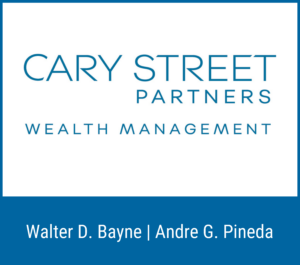As Paula Royster collected information to complete a project to identify the 10 earliest Black families in Fredericksburg two years ago, the genealogist noted an intriguing pattern.
“Certain people kept popping up,” Royster said. “So, I enlisted another researcher to help me flush through what I was seeing.”
What Royster saw was a network of free, successful Blacks as early as 1810 who owned more than 20 properties along the Rappahannock River in what is now part of downtown Fredericksburg.
They worked as abolitionists, provided bail for Blacks charged with crimes and purchased enslaved Blacks to later set them free, according to court records obtained by Royster in her research.
“So, when people talk about Black people owning other Black people, yes we did,” Royster said. “But there was a reason for it.”
Royster’s latest project, “Liberty Line” – a spinoff of “Reclaiming Our Time” in 2022 – aims to demonstrate the presence of a local Underground Railroad.

Center for African American Genealogical Research, Inc. founder Paula Royster
Royster’s nonprofit organization, the Center for African American Genealogical Research, Inc.. received a $6,000 grant from the Duff McDuff Green Jr. Fund of the Community Foundation of the Rappahannock Region to conduct research on the five subjects she identified as abolitionists during the 18th and 19th centuries.
It is the second grant CAAGRI received for the project, including one for $14,500 from the Virginia Department of Historic Resources to hire an architectural historian, who assessed 23 properties last year believed to be part of the Liberty Line or Underground Railroad that helped free enslaved people.
Most of Royster’s research is complete, but in the next month, architectural surveys will be conducted in Fredericksburg to gain a deeper understanding of the cultural landscape and create interpretations to educate the public.
The Virginia Cultural Resources Information System database will be updated with Royster’s findings with the ultimate goal of having the sites recognized with state historic markers.
“If this does not set your hair on fire, then you’re just not paying attention,” Royster said of her findings. “There are no so-called Underground Railroad locations between Fredericksburg and Richmond and none going west. There aren’t even sites in Richmond. This is of historic, international import. So, to be able to complete that, I hope it inspires others to start looking around in Stafford, in Richmond, and Caroline County.”
According to the book, “A Different Story: A Black history of Fredericksburg, Stafford and Spotsylvania, Va.” by Ruth Coder Fitzgerald, in 1810, there were 349 free Blacks in Fredericksburg, 316 in Stafford and 116 in Spotsylvania.
The first Black doctor in Fredericksburg, Dr. Anthony Monroe, lived on Frederick Street. James Ferguson also owned a home on Charles Street. Stephen Young owned property on Princess Anne Street. Royster noted that much of the property owned by Blacks up and down the Rappahannock is now owned by the city.
“These were powerful, educated people,” Royster said. “They were business partners, and they used the laws to do their work. Some of them purchased other people through apprenticeships and orphanages and they gave them a skill, whether it was a barber, a blacksmith or whatever and after a certain period, they set them free.”
They were also under intense scrutiny from the authorities, often charged with unlawful assembly for large gatherings of free Blacks and slaves. Royster learned much of her information by collaborating with Sarah Blunkosky, whose thesis to earn her master’s degree from Virginia Commonwealth University was on “Unlawful Assembly and the Fredericksburg Mayor’s Court Order Books, 1821-1834.”
Royster and Blunkosky surmised that many of the gatherings were used as a distraction for escapes to freedom at French John’s Wharf or a nearby oyster wharf.
“They were getting people out,” Royster said.
They also found a way around a Virginia law designed to prevent them from purchasing enslaved Blacks and liberating them. The law was changed so that someone could no longer buy another person that was not in their family.
“What they did, people like Adolph Richards and the DeBaptiste brothers, was they went to orphanages and started apprenticing people and then they would liberate them,” Royster said. “I have found records where the last will and testament of these business partners were to take care of the children.
“Some of them were emancipated when they came of age and some were not, to protect and keep them out of this system. It was very sophisticated, very elaborate. It happened all across the city, and nobody got it.”
























